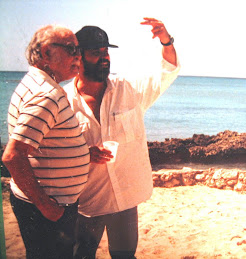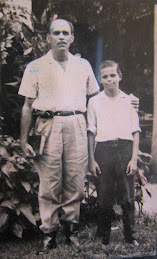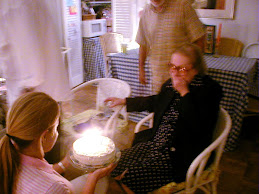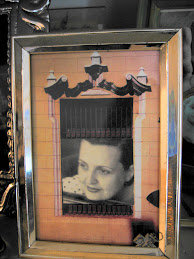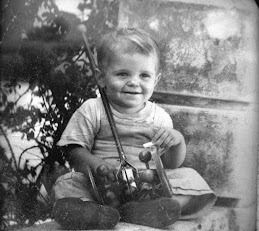




I remember the day my Aunt Pura adamantly- declared the family’s favorite dressmaker her personal property for the next 30 days --while her sister (my mother) begged her to give her up for a few days.
“Don’t be so selfish Pura, I only need her to make a few summer tops and shorts for Maria Antonia... It would take a couple of days, three at the most”
Tita Pura would not hear about it. Turning the pages of L’Officiel she explained her ordeal.
“You don’t seem to understand Antonia. The Varadero ’regattas’ are coming up in 5 weeks and Purita needs a completely new wardrobe. You very well know how important this is! She needs at least a dozen new beach outfits, 6 or 7 party dresses, blouses, skirts...You have no idea how worried I am. Guillermina will have to sew day and night to be able to finish it all on time”
Mami sighed and gave-up Guillermina without a fight. It was useless trying to convince her stubborn sister.
In 1957 Pura Ichaso de Fernández Llorens, one of my mother´s older sisters, was a handsome woman of 48 with quite a forceful demeanor. She had been a concert pianist during her youth --and until she married her husband, my beloved uncle Tito Rogelio, music had been the only meaningful thing in her life. From the moment she woke up at 7am, until very late at night, she obsessively practiced at her piano, hours at a time, wasting away, skipping meals and banging her fingers mercilessly --until the family could not take it any more and one day took her piano away and sent her to ’el campo’-- to San Diego de los Baños-- to ’take the waters’ and improve her frail health! She never got over "their betrayal", and for a long time her obsession yearned for a new focus, until -after her marriage- the birth of her only daughter, my cousin Purita-- took over where the piano had left. (To this day -at age 97- she remembers all these stories and laughs with us about them)
I remember that afternoon vividly as the sisters sat together at Tita Pura’s home. Mami was aware that for months her totally obsessed sister had been shopping all over Havana for her daughter’s summer wardrobe. Searching in every fabric store in the city -from the less expensive Jewish-owned ones, along Muralla St., to the more elegant ones in Galiano and San Rafael Sts. -she had bought the most beautiful materials, linings and perfectly matched -'serpentinas’, eyelet trimmings and ivory buttons! Heavy 'piqué panal’, 100% Egyptian cottons, the purest Irish linens in every shade of the rainbow, exquisite hand painted organzas, magnificent gazars, pastels silks, sheer lace...Magic cloths that Guillermina -the handsome mulatto dressmaker who had once worked for famous Ismael Bernabeu, Cuba’s ‘resident’ French designer- transformed into identical copies of Paris’s latest creations.
My cousin Purita was one of the prettiest and most stylish young women in Havana- and her clothes were -of course!- of paramount importance. “A 'trousseau’ for the princess”-Guillermina used to say, as Tita Pura pulled out hundreds of clippings from fashion magazines, together with drawings of her own adaptations of the designs created by Christian Dior, Balenciaga or Jacques Fath.
Her exquisite taste was well known to every dressmaker in Havana --and sometimes there were two or three different ones working for her --at the same time! Ana y Nena, two elderly Spanish sisters, did the hand embroideries and hand stitching (”just like those done at the ’clausura’ convents in Spain!”). Sweet Isabelita made the simplest designs and all alterations or 'arreglos’. Moody Carmen (a Spaniard from Barcelona who still spoke with a deep ‘catalan’ accent) was hired when good tailoring was vital (“she did wonders transforming ’English cashmere’ men’s suits into handsome ladies ’tailleurs’ ") ---and fabulous Guillermina did all the ’couture-like’ clothes “that required a 'toile' and at least 2 fittings”.
These magnificent clothes were the perfect props to emphasize Purita´s beauty --and I was lucky because after a few months I would inherit my cousin's new dresses, since she only wore them a few times. This arrangement also suited frugal ‘mami’, whom, one more time, decided not to pursue the matter --while her dazzling niece walked into the room.
Tall, with wavy blonde hair, a perpetually tanned and slightly freckled skin and yellowish eyes Purita was beautiful in a very-un-Cuban way. Everybody had to stare at her whenever she walked into a room. Unusually tall, her body had great posture, slim hips and elegant long legs. I used to be mesmerized by her because she always seemed at ease, in complete control of her surroundings, and looking stunning every minute of her life, no matter what she was doing, or how she was dressed.
At the time, her purpose in life was to marry her fiancée Julio Carrillo Silva (which she would do the following November and above you can see the photo of their engagement party) --and live happily ever after (which they have for 51 years and counting). Thus, her 'simpatía' and beauty was the only Abracadabra she had needed in her 22 years to open every door and enter every corner of the world she moved in.
“I am going to the movies with some friends mother” -she had announced as she came into the living room that Havana afternoon, wearing a cool white cotton dress that accentuated her 22 inch waist and white high heeled strappy sandals, that showed perfectly pedicured red toenails. She breezily kissed her aunt and mother and quickly took off, leaving behind a delicious trail of perfume - “See you later”.
Oh yes! --- Before she left she had asked me if I wanted to tag along with her and her girlfriends, and in no time I was out the door like a rocket! (I loved being with my 'older' cousins and being treated like an adult!) Tita Pura kissed her daughter back and sighed. Her beauty was such a reward for a proud mother! Mami (and all the other Ichaso sisters -as well as all the family cousins) were also bewitched by Purita's style.
While my mother and aunt discussed dresses and God-knows-what, Purita and I were rapidly walking away from her home in the Vedado section of Havana.
The most charming neighborhood of the city was built at the turn of the century, escaping the confining and narrow cobblestone streets of colonial Old Havana into much cooler areas; growing from the flat ocean seawall, up into a succession of gently rolling hills. By 1957 el Vedado was filled with a new and surprisingly good looking blend of modern apartment buildings and stunning turn of the century mansions. Its wide and beautifully designed avenues were accentuated by formal French gardens, as well as hundreds of wild-growing ’ceiba’ trees; some Parisian-style rotundas and huge white marble monuments to Cuba’s glorious patriots and some ex-presidents.
From the top of all of its avenues one could see -and smell- the ocean that bathed Havana 24 hours a day; while tall and thin condominium towers lived in perfect harmony with European inspired grand family homes, surrounded by stone and iron fences and lovely small gardens, bursting with jasmine and bougainvillea trees.
Some ’old money’ families still lived in their old palatial Vedado homes, filled with servants and gardeners who took great care of the beautiful structures and their magnificent gardens. Others had fled the charmed palaces and moved away to the more modern and exclusive neighborhoods of Miramar, Country Club and Biltmore, very near the Havana beaches. Some of the old Vedado 'casonas’ had become guest houses, or were divided into smaller dwellings. Others stayed behind, inhabited, but treated with indifference, standing in place through scorching sun and wild rains, and more or less abandoned to their own destiny. Decadent and weather beaten, they stood alone, in a sad state of disrepair, while flowers, plants and trees grew totally wild, their huge roots breaking up the sidewalk stones.
That afternoon my cousin and I walked fast, turning a few corners, avoiding to scrape her Italian leather heels in the deep cracks of the sidewalks. We passed one beautiful Vedado ’palacete’ after another; without looking at them twice, since this was just an old neighborhood. I don’t think we liked them very much, since they seemed to be old decadent relics of the past and most of us preferred the tall and modern condominium apartments and the huge modern mansions surrounded by enormous gardens and a kidney shaped swimming pool --miles away from the pungent smell of the small wet flowers that stained our shoes as they rotted in the Vedado sidewalks.
Very soon we were walking along Vedado’s glorious and very busy, six-laned 23rd St.
A wide and buoyant street, filled with apartment buildings of all sizes and styles; hundreds of shops, 'bodegas’, fun-filled cafés, theaters and restaurants-- 'la Calle 23’ had marvelous character and flair. Traveled by scores of buses, taxis and private cars, 23rd Street crossed ’el Vedado’ for many miles, from one end to the other ---starting down by the water, at Havana Bay, near all the newest 'lounges’, bars and cabarets of the bustling 5 blocks of the La Rampa area -- all the way to the Almendares River and a skimpy clump of trees, which was pretentiously called ‘Havana’s Forest’. ('El Bosque de La Habana').
Numerous street food vendors crowded the sidewalk at the well known corner of '12 y 23’ --near the familiar arched gates of our magnificent Colón Cemetery and two well known glass enclosed cafés --one of them the hangout of many 'bohemian’ characters (like my father) and a nest of anti-Batista conspirators.
The smell of fried fish 'minutas’, pork rinds, 'fritas’, and plantains 'mariquitas’ filled the air, and every Cuban in the world just loved to eat from these quaint street vendors. Even though my taste for food was much more ‘international' -- ranging from Canneloni Rossini to Shrimp Cocktails and Roast Chicken --the smell and feel of our delicious street food and the omnipresent ‘rice and beans’ was always tempting, although most ‘middle class’ families preferred a more international fare -and ate ‘frijoles negros con arroz’ mostly during certain occasions, like Christmas Eve’s traditional ’Nochebuena’ family dinner. Of course we all ate ’Arroz con Pollo’ or ‘Paella’, during the Sunday’s luncheons held at our grandmother’s.
Leaving behind the street smells and flavors, we walked as fast as she could by the groups of people waiting for buses, incessantly talking in clipped loud voices --and by the lines of men, women and children buying syrupy dripping 'capuchinos’ and wanna-be-éclairs from “Triana’s Bakery” . Skipping bodies here and there, avoiding contact with sweaty faces and hands, pretending we did not notice the lewd eyes of the men who crossed our path -- fifteen minutes later we had finally arrived at the entrance of the “23 y 12” cinema, a jewel of an art-deco building we hardly paid any attention to.
“Don’t be so selfish Pura, I only need her to make a few summer tops and shorts for Maria Antonia... It would take a couple of days, three at the most”
Tita Pura would not hear about it. Turning the pages of L’Officiel she explained her ordeal.
“You don’t seem to understand Antonia. The Varadero ’regattas’ are coming up in 5 weeks and Purita needs a completely new wardrobe. You very well know how important this is! She needs at least a dozen new beach outfits, 6 or 7 party dresses, blouses, skirts...You have no idea how worried I am. Guillermina will have to sew day and night to be able to finish it all on time”
Mami sighed and gave-up Guillermina without a fight. It was useless trying to convince her stubborn sister.
In 1957 Pura Ichaso de Fernández Llorens, one of my mother´s older sisters, was a handsome woman of 48 with quite a forceful demeanor. She had been a concert pianist during her youth --and until she married her husband, my beloved uncle Tito Rogelio, music had been the only meaningful thing in her life. From the moment she woke up at 7am, until very late at night, she obsessively practiced at her piano, hours at a time, wasting away, skipping meals and banging her fingers mercilessly --until the family could not take it any more and one day took her piano away and sent her to ’el campo’-- to San Diego de los Baños-- to ’take the waters’ and improve her frail health! She never got over "their betrayal", and for a long time her obsession yearned for a new focus, until -after her marriage- the birth of her only daughter, my cousin Purita-- took over where the piano had left. (To this day -at age 97- she remembers all these stories and laughs with us about them)
I remember that afternoon vividly as the sisters sat together at Tita Pura’s home. Mami was aware that for months her totally obsessed sister had been shopping all over Havana for her daughter’s summer wardrobe. Searching in every fabric store in the city -from the less expensive Jewish-owned ones, along Muralla St., to the more elegant ones in Galiano and San Rafael Sts. -she had bought the most beautiful materials, linings and perfectly matched -'serpentinas’, eyelet trimmings and ivory buttons! Heavy 'piqué panal’, 100% Egyptian cottons, the purest Irish linens in every shade of the rainbow, exquisite hand painted organzas, magnificent gazars, pastels silks, sheer lace...Magic cloths that Guillermina -the handsome mulatto dressmaker who had once worked for famous Ismael Bernabeu, Cuba’s ‘resident’ French designer- transformed into identical copies of Paris’s latest creations.
My cousin Purita was one of the prettiest and most stylish young women in Havana- and her clothes were -of course!- of paramount importance. “A 'trousseau’ for the princess”-Guillermina used to say, as Tita Pura pulled out hundreds of clippings from fashion magazines, together with drawings of her own adaptations of the designs created by Christian Dior, Balenciaga or Jacques Fath.
Her exquisite taste was well known to every dressmaker in Havana --and sometimes there were two or three different ones working for her --at the same time! Ana y Nena, two elderly Spanish sisters, did the hand embroideries and hand stitching (”just like those done at the ’clausura’ convents in Spain!”). Sweet Isabelita made the simplest designs and all alterations or 'arreglos’. Moody Carmen (a Spaniard from Barcelona who still spoke with a deep ‘catalan’ accent) was hired when good tailoring was vital (“she did wonders transforming ’English cashmere’ men’s suits into handsome ladies ’tailleurs’ ") ---and fabulous Guillermina did all the ’couture-like’ clothes “that required a 'toile' and at least 2 fittings”.
These magnificent clothes were the perfect props to emphasize Purita´s beauty --and I was lucky because after a few months I would inherit my cousin's new dresses, since she only wore them a few times. This arrangement also suited frugal ‘mami’, whom, one more time, decided not to pursue the matter --while her dazzling niece walked into the room.
Tall, with wavy blonde hair, a perpetually tanned and slightly freckled skin and yellowish eyes Purita was beautiful in a very-un-Cuban way. Everybody had to stare at her whenever she walked into a room. Unusually tall, her body had great posture, slim hips and elegant long legs. I used to be mesmerized by her because she always seemed at ease, in complete control of her surroundings, and looking stunning every minute of her life, no matter what she was doing, or how she was dressed.
At the time, her purpose in life was to marry her fiancée Julio Carrillo Silva (which she would do the following November and above you can see the photo of their engagement party) --and live happily ever after (which they have for 51 years and counting). Thus, her 'simpatía' and beauty was the only Abracadabra she had needed in her 22 years to open every door and enter every corner of the world she moved in.
“I am going to the movies with some friends mother” -she had announced as she came into the living room that Havana afternoon, wearing a cool white cotton dress that accentuated her 22 inch waist and white high heeled strappy sandals, that showed perfectly pedicured red toenails. She breezily kissed her aunt and mother and quickly took off, leaving behind a delicious trail of perfume - “See you later”.
Oh yes! --- Before she left she had asked me if I wanted to tag along with her and her girlfriends, and in no time I was out the door like a rocket! (I loved being with my 'older' cousins and being treated like an adult!) Tita Pura kissed her daughter back and sighed. Her beauty was such a reward for a proud mother! Mami (and all the other Ichaso sisters -as well as all the family cousins) were also bewitched by Purita's style.
While my mother and aunt discussed dresses and God-knows-what, Purita and I were rapidly walking away from her home in the Vedado section of Havana.
The most charming neighborhood of the city was built at the turn of the century, escaping the confining and narrow cobblestone streets of colonial Old Havana into much cooler areas; growing from the flat ocean seawall, up into a succession of gently rolling hills. By 1957 el Vedado was filled with a new and surprisingly good looking blend of modern apartment buildings and stunning turn of the century mansions. Its wide and beautifully designed avenues were accentuated by formal French gardens, as well as hundreds of wild-growing ’ceiba’ trees; some Parisian-style rotundas and huge white marble monuments to Cuba’s glorious patriots and some ex-presidents.
From the top of all of its avenues one could see -and smell- the ocean that bathed Havana 24 hours a day; while tall and thin condominium towers lived in perfect harmony with European inspired grand family homes, surrounded by stone and iron fences and lovely small gardens, bursting with jasmine and bougainvillea trees.
Some ’old money’ families still lived in their old palatial Vedado homes, filled with servants and gardeners who took great care of the beautiful structures and their magnificent gardens. Others had fled the charmed palaces and moved away to the more modern and exclusive neighborhoods of Miramar, Country Club and Biltmore, very near the Havana beaches. Some of the old Vedado 'casonas’ had become guest houses, or were divided into smaller dwellings. Others stayed behind, inhabited, but treated with indifference, standing in place through scorching sun and wild rains, and more or less abandoned to their own destiny. Decadent and weather beaten, they stood alone, in a sad state of disrepair, while flowers, plants and trees grew totally wild, their huge roots breaking up the sidewalk stones.
That afternoon my cousin and I walked fast, turning a few corners, avoiding to scrape her Italian leather heels in the deep cracks of the sidewalks. We passed one beautiful Vedado ’palacete’ after another; without looking at them twice, since this was just an old neighborhood. I don’t think we liked them very much, since they seemed to be old decadent relics of the past and most of us preferred the tall and modern condominium apartments and the huge modern mansions surrounded by enormous gardens and a kidney shaped swimming pool --miles away from the pungent smell of the small wet flowers that stained our shoes as they rotted in the Vedado sidewalks.
Very soon we were walking along Vedado’s glorious and very busy, six-laned 23rd St.
A wide and buoyant street, filled with apartment buildings of all sizes and styles; hundreds of shops, 'bodegas’, fun-filled cafés, theaters and restaurants-- 'la Calle 23’ had marvelous character and flair. Traveled by scores of buses, taxis and private cars, 23rd Street crossed ’el Vedado’ for many miles, from one end to the other ---starting down by the water, at Havana Bay, near all the newest 'lounges’, bars and cabarets of the bustling 5 blocks of the La Rampa area -- all the way to the Almendares River and a skimpy clump of trees, which was pretentiously called ‘Havana’s Forest’. ('El Bosque de La Habana').
Numerous street food vendors crowded the sidewalk at the well known corner of '12 y 23’ --near the familiar arched gates of our magnificent Colón Cemetery and two well known glass enclosed cafés --one of them the hangout of many 'bohemian’ characters (like my father) and a nest of anti-Batista conspirators.
The smell of fried fish 'minutas’, pork rinds, 'fritas’, and plantains 'mariquitas’ filled the air, and every Cuban in the world just loved to eat from these quaint street vendors. Even though my taste for food was much more ‘international' -- ranging from Canneloni Rossini to Shrimp Cocktails and Roast Chicken --the smell and feel of our delicious street food and the omnipresent ‘rice and beans’ was always tempting, although most ‘middle class’ families preferred a more international fare -and ate ‘frijoles negros con arroz’ mostly during certain occasions, like Christmas Eve’s traditional ’Nochebuena’ family dinner. Of course we all ate ’Arroz con Pollo’ or ‘Paella’, during the Sunday’s luncheons held at our grandmother’s.
Leaving behind the street smells and flavors, we walked as fast as she could by the groups of people waiting for buses, incessantly talking in clipped loud voices --and by the lines of men, women and children buying syrupy dripping 'capuchinos’ and wanna-be-éclairs from “Triana’s Bakery” . Skipping bodies here and there, avoiding contact with sweaty faces and hands, pretending we did not notice the lewd eyes of the men who crossed our path -- fifteen minutes later we had finally arrived at the entrance of the “23 y 12” cinema, a jewel of an art-deco building we hardly paid any attention to.
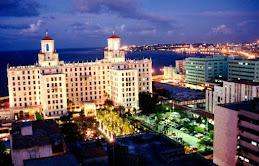
+azul.jpg)







.jpg)


















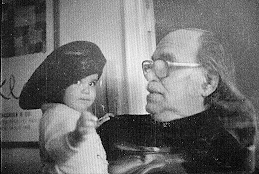.jpg)



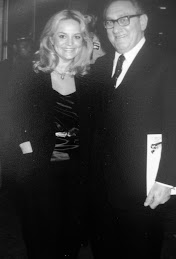.jpg)

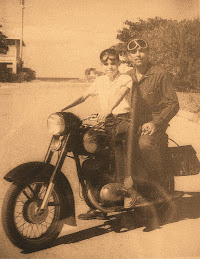.jpg)










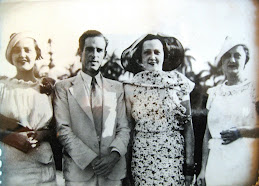

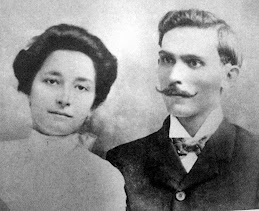

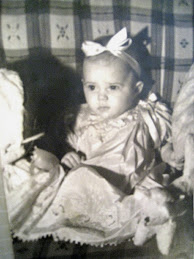

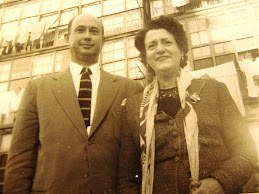


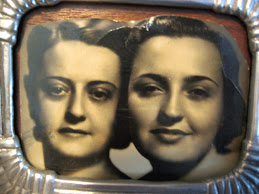

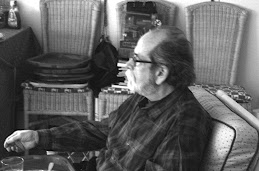
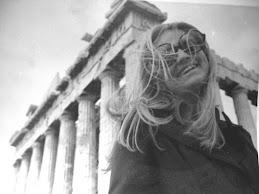

.jpg)

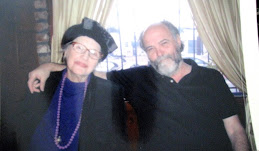
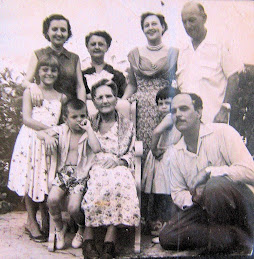

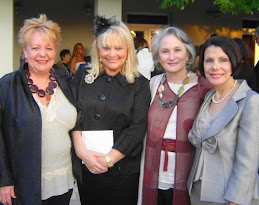

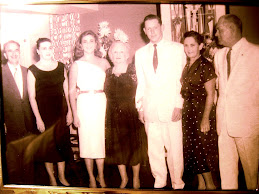
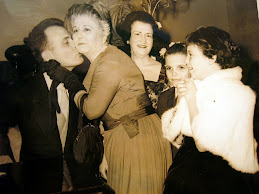

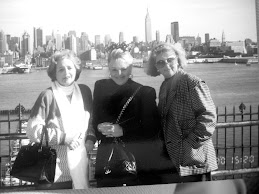

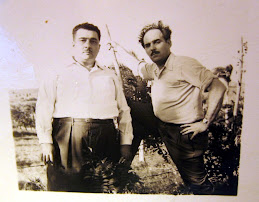

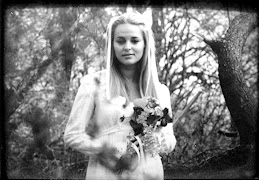
.jpg)
